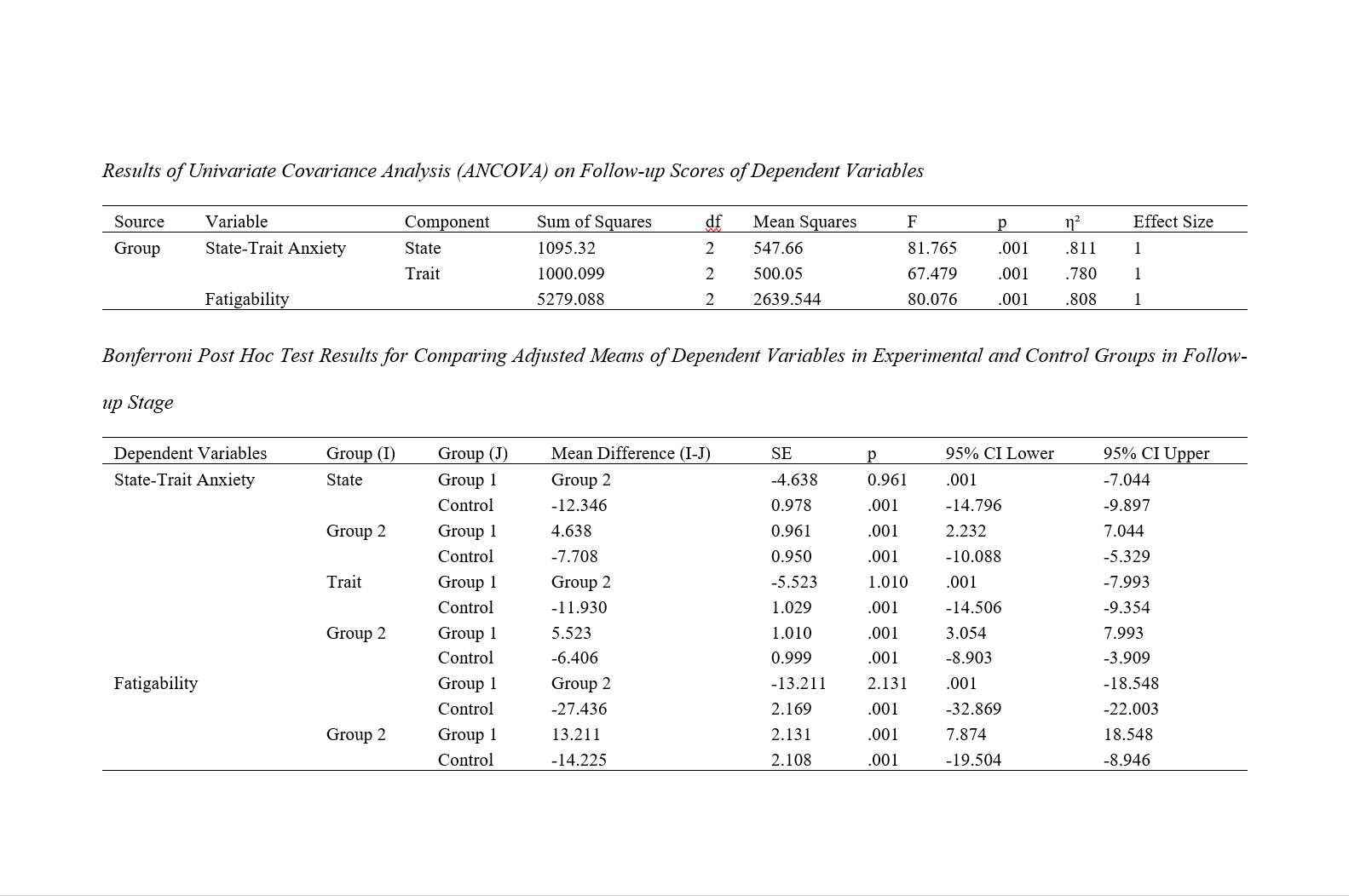Comparison of the Effectiveness of Mental Deactivation Therapy and Cognitive-Behavioral Therapy Based on Hofmann's Model on State-Trait Anxiety and Fatigability in Adolescents with Generalized Anxiety Disorder
Keywords:
Mental Deactivation Therapy, Cognitive-Behavioral Therapy Based on Hofmann's Model, State-Trait Anxiety, Fatigability, AdolescentsAbstract
Objective: The aim of this study was to investigate and compare the effectiveness of mental deactivation therapy and cognitive-behavioral therapy based on Hofmann's model on state-trait anxiety and fatigability in adolescents with generalized anxiety disorder.
Materials and Methods: This experimental study used a pre-test-post-test design with a control group and a follow-up test. The population of this study included all adolescents with generalized anxiety disorder in Bushehr County, from which 45 individuals were selected using purposive sampling based on inclusion and exclusion criteria. The participants were randomly assigned to three groups: 15 to the first experimental group, 15 to the second experimental group, and 15 to the control group. Participants responded to the State-Trait Anxiety Inventory (Spielberger et al., 1983) and the Fatigue Severity Scale (Farmer & Sandberg, 1986). Group 1 received a 12-weekly-session, 120-minute therapy program based on the Jelodari Guide (2021), and Group 2 received a 12-weekly-session, 120-minute therapy program based on the Hofmann and Otto Guide (2008), while the control group did not receive any intervention. Data were analyzed using univariate and multivariate covariance analysis and Bonferroni post hoc test with SPSS-26.
Findings: The results of the multivariate covariance analysis indicated a significant difference between the post-tests of the groups (p < .001). Bonferroni post hoc test results showed that both experimental groups led to a reduction in anxiety (p < .001) and fatigability (p < .001) compared to the control group. Moreover, mental deactivation therapy had a better performance in reducing anxiety (p < .001) and fatigability (p < .001) compared to cognitive-behavioral therapy based on Hofmann's model.
Conclusion: Based on the results, it can be concluded that mental deactivation therapy, due to its individualized nature, is more effective in treating individuals with various needs and issues. In contrast, cognitive-behavioral therapy based on Hofmann's model, due to its primary focus on social anxiety disorder, has lower efficacy in treating non-anxiety disorders.
Downloads

Downloads
Additional Files
Published
Issue
Section
License

This work is licensed under a Creative Commons Attribution-NonCommercial 4.0 International License.








